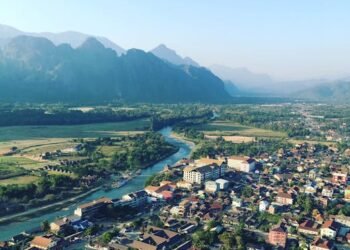Thailand’s Ambitious Wellness Tourism Strategy: Transforming Ranong into a Hot Spring Haven
As the world continues to embrace wellness tourism, Thailand is making significant strides to establish itself as a premier destination in this burgeoning industry. With a focus on developing its natural hot springs, particularly in the picturesque region of Ranong, the country aims to rival Japan’s renowned onsens and attract wellness seekers from around the globe.
The Vision for Wellness Tourism in Thailand
Thailand has long been celebrated for its rich cultural heritage and stunning landscapes, but now it is setting its sights on becoming a key player in the wellness tourism sector. The government’s new wellness tourism strategy is designed to harness the potential of natural hot springs, which are not just a source of relaxation but also believed to offer various health benefits.
Ranong, located on the country’s southern coast, is at the forefront of this transformation. Known for its lush greenery and serene environment, this region is home to some of Thailand’s most pristine hot springs. The government’s initiative aims to enhance infrastructure, promote sustainable practices, and create a holistic experience for visitors seeking relaxation and rejuvenation.
Ranong: The Next Wellness Destination
The plans for Ranong include developing world-class wellness resorts and spas that incorporate the healing properties of hot springs. This initiative is not just about luxury; it also emphasizes accessibility, ensuring that wellness experiences are available to a broader audience. The strategic development will likely involve collaborations with local businesses and international wellness experts to create unique offerings that cater to diverse needs.
In addition to enhancing the hot spring experience, the strategy aims to promote adjacent wellness activities such as yoga retreats, meditation sessions, and traditional Thai healing practices. By combining these elements, Thailand hopes to create a truly immersive wellness experience that rivals that of Japan’s iconic onsens.
Benefits Beyond Tourism
The wellness tourism strategy is expected to bring numerous benefits to the local community. Increased tourism can lead to job creation in various sectors, from hospitality to health and wellness services. Furthermore, fostering sustainable tourism practices will help preserve the natural beauty of Ranong, ensuring that it remains an attractive destination for generations to come.
Moreover, by promoting wellness tourism, Thailand can also enhance its global reputation as a health-conscious destination. This aligns with the growing trend of travelers prioritizing health and wellness during their journeys, making it an opportune moment for Thailand to capitalize on this market.
Looking Ahead
As Thailand embarks on this ambitious journey to transform Ranong into a wellness hotspot, the global community will be watching closely. If successful, this initiative could set a precedent for other regions in Thailand and beyond to follow suit, further establishing the country as a leader in the wellness tourism industry.
In conclusion, Thailand’s new wellness tourism strategy is not just about attracting visitors; it’s about creating a sustainable future for its communities and natural resources. As Ranong prepares to welcome wellness enthusiasts from around the world, it stands poised to become a beacon of relaxation, health, and rejuvenation.
For those looking to explore the healing powers of hot springs, Ranong promises to be a destination worth watching in the coming years.









